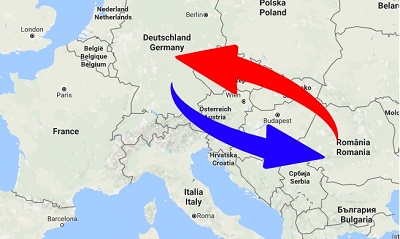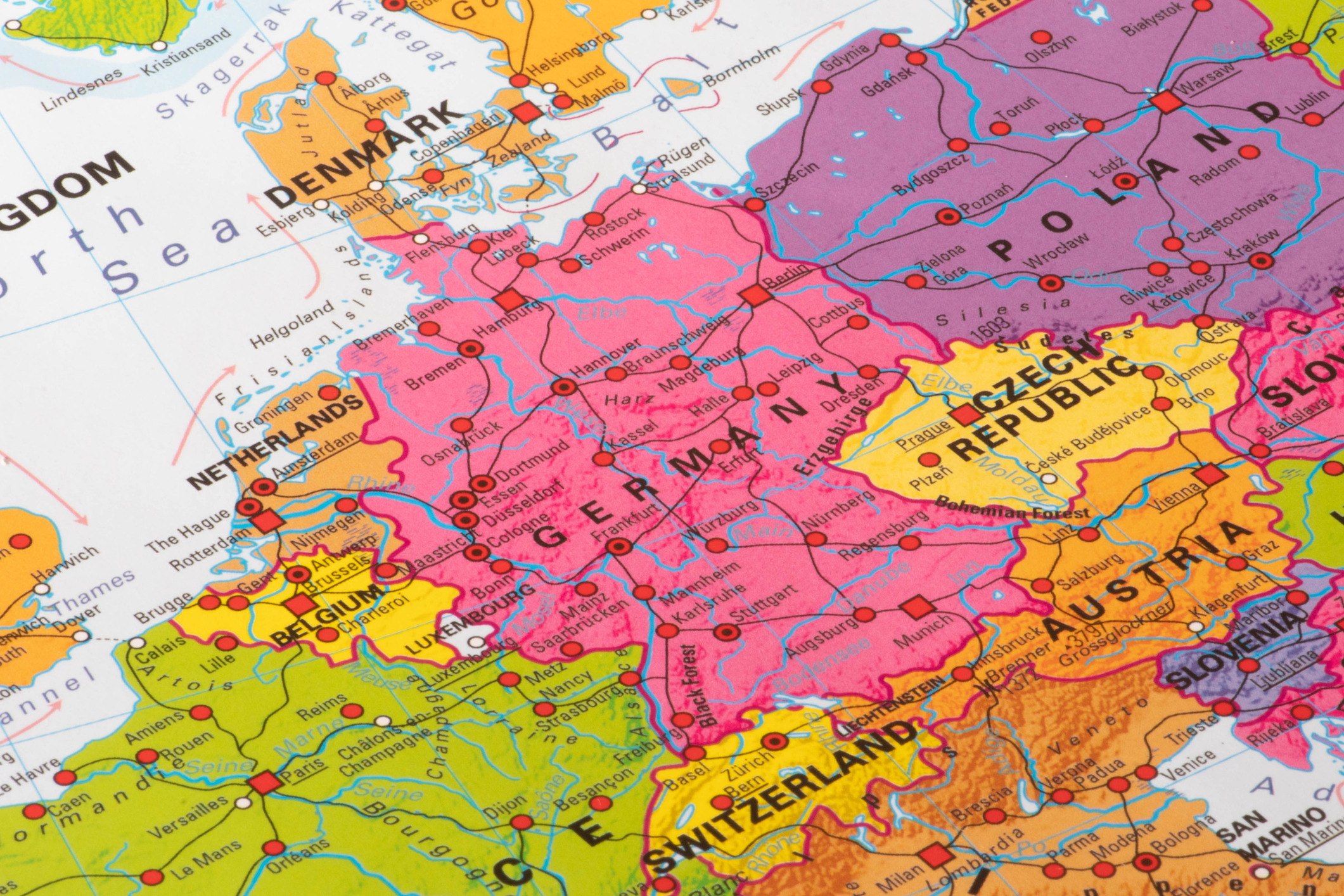Germany and Forward Defense
In 1985, when I set up a working group at the Institute for Defense Analysis on Germany with a focus on possible unification, one of the participants in this effort was my friend the late Ronald Asmus. Throughout his life, we frequently discussed Germany and European defense, then interpreted by the Clinton Administration of which he was part as shaping a w ay ahead for NATO expansion.
But his key point was when the capital of Germany would shift from Bonn to Berlin, inevitably Germany would shift its focus from its inclusion as a state in the West, to becoming a part once again of Central Europe and the future evolution of the region.
This certainly has happened with regard to the European Union and Germany’s leading role in the European Union; but it has not happened really with regard to defense.
Because if it had, then Germany would have built a resilient defense structure within Germany to support their ability along with allies to project power forward into the Central European and Baltic regions.
And with allowing their defense capabilities to atrophy, any rebuild needs now to return to the focus which German unification opened up but saw little or real commitment to shaping a defense capability to marry with its broader foreign and economic policies in Central Europe.
What essentially does this entail?
It starts with shaping a more resilient Germany from a security and defense point of view.
This means energy resilience, an ability to supply energy for forward deployed Alliance and German forces; this means resilient defense of logistic supplies and ability to move those supplies forward; NATO has already identified this as a key role for Germany.
As Frank Sauer of the Bundeswehr University in Munich has put it:
In principle, the NATO contingents that had been on the eastern flank in the Baltics were only meant to be a kind of trip wire,” the military researcher told DW. The idea was merely to slow down a potential Russian invasion of NATO territory so that the alliance would gain time to organize. “But in the face of Russian aggression in Ukraine, they are now saying: We can’t just put up a trip wire,” Sauer said. “We have to be capable of defending from the start. That’s why this massive increase was decided.”
For the Bundeswehr, he said, this is extremely significant in that it is not only helping to ramp up forces to defend, say, Lithuania, “but because Germany is expected to be the logistical hub through which everything will be handled.” This, he said, is a major strategic realignment in Europe with lasting effects for the Bundeswehr.
To do this will require enhancing air and missile defense, something the Chancellor has already highlighted.
When Ed Timperlake and I visited Fort Sill several years ago, we learned that the U.S. Army warfighters in active defense considered the Germans to be really first rate in terms of Patriot operations. So, building from this forward, how best to enhance active defense?
Clearly, adding the F-35 to the Luftwaffe provides an important stimulus; but also working more closely with the Poles who have really prioritized active defense, including being the only NATO ally to adopt an integrated approach being offered through the IBCS system.
With effective air and missile defense, the challenge then is to move forward the kind of combined arms packages required for specific areas of operations.
I would argue that indeed we will and are seeing innovation in this area of combined arms packages. This involves innovation with regard to what kind of assault forces, combined with what kind of ground maneuver defense forces and what kind of integrated kill web strike capabilities can be leveraged across the national and allied forces. And then how to effectively deploy such forces to a specific defense or combat area.
And as one analyst has highlighted about the defense rethink in Germany, capitalizing on innovation if a key requirement and opportunity. As noted in an April 11, 2022 article by Torben Schutz, Joseph Verbovsky and Heiko Borchert:
“The Bundestag should become more vocal in demanding and advocating defense innovation that enables daring and reflects the current geostrategic challenges. The defense spending increase should thus be used to create a new long-term budget line dedicated to funding defense innovation and experimentation.
“The 2021 defense budget already earmarks spending on concept development and experimentation to support the Bundeswehr’s transformation. Building on this idea, the new defense innovation and experimentation budget should cover national demonstration projects and provide matching funds to support multinational projects under the European Defense Fund and incentivize cooperation with NATO’s innovation framework.
“The Bundestag should also appoint one of its members as a Defense Innovation and Experimentation Ambassador to oversee output and outcome-driven spending of the respective funds, serve as a patron for innovation and experimentation exercises and demonstrations, and host hearings and conferences on topics related to the advancement of Bundeswehr innovation.”
That approach to innovation can shape ways to build a more resilient Germany in support of defense of both Germany and its forward defense capabilities.
This means both in terms of how to build active defenses for its territory and to project power forward, to shape new combinations of combined armed forces for forward defense and closing any gaps opened from Russian pressure on Northern, Baltic or Central European allies; and in terms of how to sustain force forward.
If we would return to the map which was created fro the report on Germany and contributing to Baltic Sea Region security, we can identify some of the areas where German military support and capabilities need to be able to flow.

As I argued above, it would make sense to think of Poland and Germany as a single defense area.
This has been difficult because of relations between the two states and their roles in the European Union, but from a defense standpoint I really think there is no other conclusion.
Second, there is the need to project power to the Baltic states and to provide for their defense and to provide for NATo defense in depth.
Third, there is the newly expanded defense perimeter of Northern Europe and the Baltic region.
This means both that Germany has new responsibilities but new opportunities as well to work with a more integrated Nordic defense. And this area highlights the opportunity to work integration across sea, air and land, which certainly has not been a strong point for Germany, but is an inherent capability within the new ISR and C2 technologies being deployed and developed by Germany’s allies.
Fourth, there is what is not seen on this map, namely, the need to deal with the Central European states to the south and east of Germany. The map below done to illustrate transport from Germany to Romania provides an insight into the broader defense challenge of movement to the relevant region in a crisis.

Engagement in this area rapidly takes Germany to the Black Sea region, but one could argue that they are not the primary player here, but a contributor.
But that gets at the broader point: where should Germany concentrate its innovations?
Where should it focus on its re-set of capabilities?
And how to structure a relativistic strategy in light with its evolving capacities and requirements?
A key challenge facing any credible defense strategy is to correlate ends with means; and to ensure that core priorities are met. I have indicated what in my view this priorities might be, and will turn to the question of how to move evolving capabilities across the relevant European chessboard for Germany.
And here I am getting at a key point which can be easily missed in a defense rebuild: which platforms allow for the kinds of deployment flexibility required by the new warfighting approaches?
Put another way, Germany is not simply a repository of self-defense capabilities; it needs to be a launch pad for forward defense capabilities. And it is a challenging path to go from a low combat readiness force of limited means to shaping a kill web enabled mobile force capability to support forward defense and seam warfare.
Note: After my last visit to Poland last Fall, I focused on the challenge for Poland of engaging in “seam warfare”
Obviously this even more significantly applies to Germany, and is a key part of what operationally forward defense means against the Russians in the evolving approach to the direct defense of Europe.
This is how I defined the challenge in that article:
In working the direct defense of Europe under the impact of the diverse tools sets of the global authoritarian powers, Russia and China, what is required is crafting effective defense and security forces integrated with core allies across the spectrum of conflict.
For Europeans, the challenge is to have the kind of secure and robust infrastructure combined with viable conventional forces to deter the authoritarians from being tempted for a broader scale attack, but even more likely, the pursuit of seam warfare.
Effective crisis management requires escalation control ranging from HADR operations through gray zone conflict to higher levels of lethal combat.
A core challenge to be met is what one might call the ability to conduct effective seam warfare, namely through working with partners and allies to reduce the seams left open in European defense which the authoritarian powers can exploit.
Force integratability and mobility are key elements in the ability for a country’s forces to collaborate with allies at the point where the adversary is working a seam to enhance their ability to maximize their political or military advantage.
The Russians focus on what the West calls hybrid war but in my view is better understood as working the seams in their geography to expand their influence and to recover strategic space lost in the collapse of the Soviet Union and the decline of Russia.
For Poland, in addition to providing for their own territorial defense, the Russians are working the seams in the Polish political space, notably, with regard to the Nordic and Baltic regions, the Black Sea region, Romania and Ukraine.
This a region which remains contested from the Russian point of view, and for the defense of Polish interests, an ability not only to enhance the defense of Polish territory, but the ability to move force packages to close seams which the Russians pressure is crucial as well.
With the Nordics, the building of new frigates for the Polish Navy open up opportunities to work with the Nordics on maritime security and defense in the region. With the acquisition of the F-35, the Poles will work with the Nordics, the Americans, the British, the Dutch and the Belgians in training for integrated air operations in the region, with a significant capability to operate throughout the region and to close gaps.
With the Russians mobilizing “migrants” as a battering ram through Belarus against the Balts, the Poles and more broadly the Europeans, the security capabilities are being enhanced, but again, security can become a defense challenge very rapidly as the authoritarians mingle their defense forces with “migrants” for hybrid actions.
The mobilization of force by the Russians against Ukraine or the Black Sea allies is an ongoing challenge by which the Russians manage brinkmanship and prepare for escalation dominance when they will exploit the seams within European defense.
This means that Poland needs force mobility as well defense in depth to deal with the Russian challenge. And by having mobile forces that can be integrated for defense in depth, they are better positioned than simply having a more classic territorial defense force which begins to look like a 21st century version of the Maginot Line.
Featured Graphic: Photo 179434965 / German European Map © Michele Ursi | Dreamstime.com

